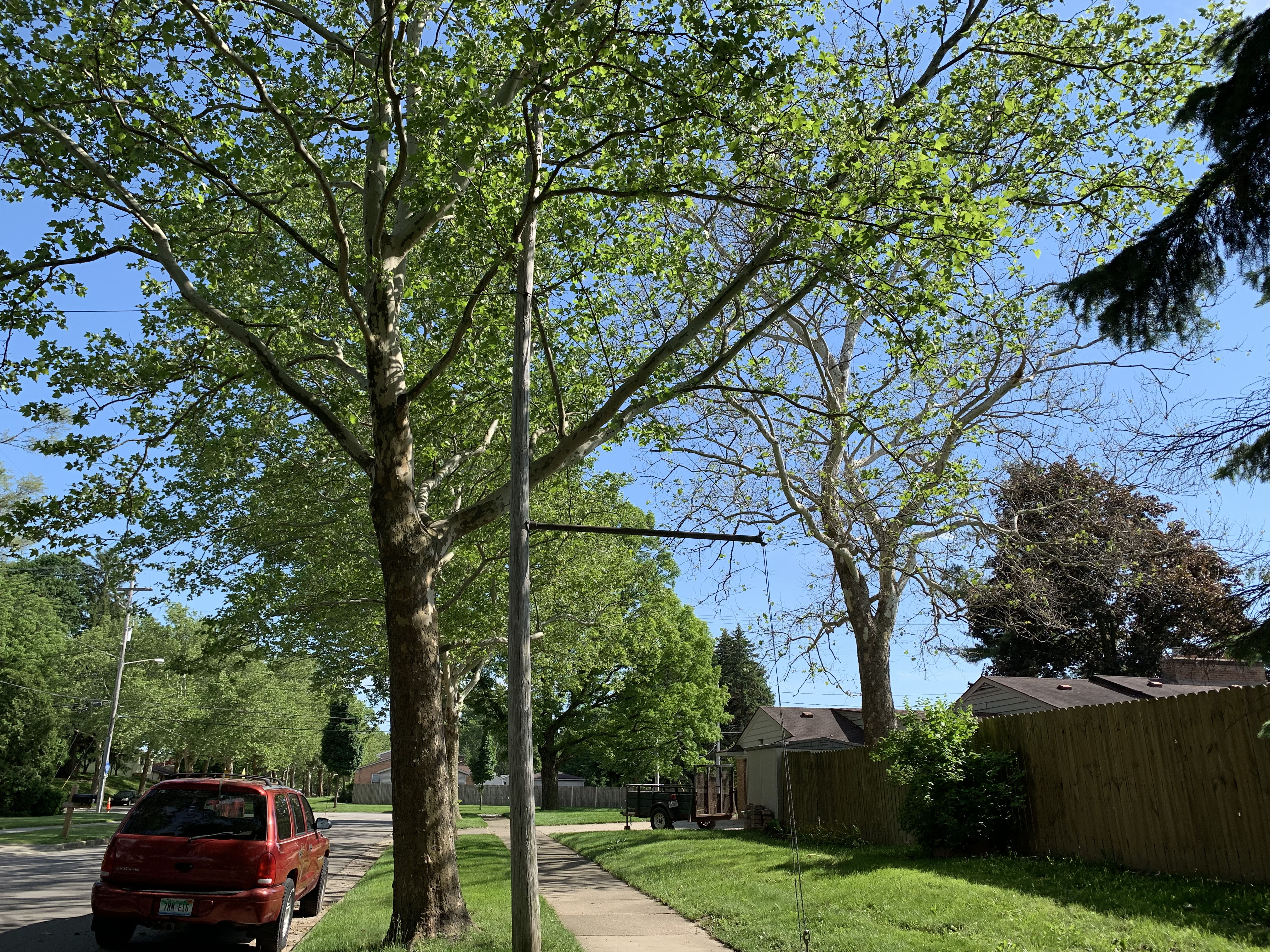Sycamore anthracnose: Why your sycamore may be slow to leaf out this spring
Many American sycamores have not leafed out well during this cold, wet spring, but they should recover with warmer weather.

Michiganders in the lower part of the state have noticed their sycamores looking rather sickly this 2019 growing season. A cold, wet spring has caused many American sycamore trees (Platanus occidentalis) in the Michigan area to exhibit severe symptoms of a fungal disease called sycamore anthracnose. For example, a resident of Livingston County, Michigan, submitted a question to the Michigan State University Extension Ask an Expert group, noting that their 200-year-old sycamore tree looked sick and was “very light on leaf foliage.”
Sycamore anthracnose is caused by the fungal pathogen Apiognomonia veneta, which overwinters on dead Platanus spp. leaves, as well as in infected twigs and branch cankers. The pathogen starts reproducing from these sources to infect new leaves and shoots. Fungal spores are spread via rain splash as the new leaves and shoots emerge. Expanding sycamore shoots and leaves may quickly develop disease symptoms and die. Extended periods of cold spring weather slow growth of the sycamore tree. Meanwhile the fungal pathogen can grow further and kill dormant buds. All of this results in the very bare-looking sycamore trees that Michigan residents have noticed. Temperature and rainfall significantly impact the overall severity of this disease.
However, don’t panic, even in seasons with more severe infections, when the weather gets warmer and drier as the season progresses, anthracnose disease should abate, and the sycamores should put out a second flush of leaves by the end of the season. Mature leaves are naturally more resistant.

One primary “management option” for sycamore anthracnose is to wait – the tree will likely recover with another flush of leaves. Other management options and Smart Gardening practices include collecting and disposing of diseased leaves at the end of the season; pruning out diseased and damaged branches, especially with smaller trees (remember to sanitize pruning tools between cuts); pruning for good air flow to reduce the leaf wetness period; watering your tree during droughty periods; and getting a soil test to determine whether the soil is lacking any nutrients needed for tree growth.
Fungicides are generally uncalled for to treat shade tree anthracnose on otherwise healthy trees, though fungicides are an option in certain cases. Examples of these cases would be if the trees are not well established or small, or unusually attractive trees that are very important to the aesthetics of the landscape.
If you are considering planting a new sycamore tree, you may want to opt instead for less susceptible London planetree (Platanus x acerifolia) cultivars, such as ‘Bloodgood,’ ‘Columbia,’ ‘Liberty,’ Exclamation! or Ovation. Oriental plane trees (P. orientalis) are also reported to be less susceptible to sycamore anthracnose, according to a Missouri Botanical Garden article, but would not be recommended for planting in Michigan since they are only hardy up to a United States Department of Agriculture (USDA) plant hardiness zone of 7, which is warmer overall temperatures than we experience here in Michigan.
Resources
- Sinclair and Lyon, Diseases of Trees and Shrubs, 2nd edition Cornell University Press, 2005.
- London planetree from The Morton Arboretum
- Platanus x acerifolia: London planetree from University of Connecticut



 Print
Print Email
Email
